-
Posts
12420 -
Joined
-
Last visited
-
Days Won
551
Content Type
Profiles
Forums
Events
Everything posted by Fiery
-
Thank you for the feedbacks Yes, the v2.30 stable version is on its way for a late March release date.
-

CPU Temp. Sensor Not Working (Asus M4A785-M)
Fiery replied to Anticonformity11's topic in Hardware monitoring
Please right-click on the bottom status bar of AIDA64 main window --> Sensor Debug --> ISA Sensor Dump. Copy-paste the full results into this topic. Using that data we can adjust the sensor readings to perfectly suit your motherboard. As for the AIDA64 System Stability Test, yes, we believe it is just as good or even better than competitive solutions. Our solution uses state-of-the-art methods like AVX and XOP acceleration, and now features an OpenCL GPGPU module as well. However, due to the fact that instability issues cannot be characterized or defined like a mathematical formula, there's no telling which stress tesing or stability checking solution would be able to catch an instability situation, or trigger a system malfunction while stressing the computer. AIDA64 System Stability Test is well-proven and favored by many enthusiasts, and we never stop improving it to make it even more efficient. -

MySQL Connector/ODBC did not display in database / database software
Fiery replied to ifjustone's topic in Bug reports
Thank you for your patience about this issue. Make sure to upgrade to the latest beta version of AIDA64 Extreme Edition available at: http://www.aida64.com/downloads/aida64extremebuild1849h5q0sfmjptzip After upgrading to this new version, make sure to restart Windows to finalize the upgrade. Let me know how it works. -
We've adjusted the power load measurement for HID UPS devices. Make sure to upgrade to the latest beta version of AIDA64 Extreme Edition available at: http://www.aida64.com/downloads/aida64extremebuild1849h5q0sfmjptzip After upgrading to this new version, make sure to restart Windows to finalize the upgrade. Let me know how it works. Thanks, Fiery
-

APC UPS battery voltage and power draw measurement
Fiery replied to Arctucas's topic in Hardware monitoring
Thank you for your patience about this issue. Make sure to upgrade to the latest beta version of AIDA64 Extreme Edition available at: http://www.aida64.com/downloads/aida64extremebuild1849h5q0sfmjptzip After upgrading to this new version, make sure to restart Windows to finalize the upgrade. Let me know how it works. Thanks, Fiery -
Thank you. The voltages have been adjusted in the latest beta version of AIDA64 Extreme Edition available at: http://www.aida64.com/downloads/aida64extremebuild1849h5q0sfmjptzip After upgrading to this new version, make sure to restart Windows to finalize the upgrade. Let me know how it works.
-
Please note that CPU load% measurement cannot take very short spikes into account. But those very short spikes will still make your CPU to switch power state either via ACPI states or C1E (Enhanced Halt State). We're 100% confident that the CPU VID detection in AIDA64 is done properly and provides accurate output.
-
It's not possible to measure VID and clocks in the same time. And between the time AIDA64 measures clock and VID the clocks or the VID may just change.
-

Stress Samsung 830 Series SSD
Fiery replied to InSearchOf's topic in Benchmarking, system performance
AIDA64 System Stability Test only uses high-level (file system) read operations, and only on local disk partitions. It will not harm any storage devices. However, since it uses file system operations, you need to have at least a few hundred files on at least one partition on the drive to let AIDA64 stress it in its System Stability Test module. Alternatively, you can use the AIDA64 Disk Benchmark module to measure the performance of your SSD. In default it will use low-level (direct) read operations, and will not harm or wear out SSD or USB pendrive flash memory cells. You can also enable write operations in AIDA64 Disk Benchmark, but it will cause some SSD drive wear, so you should use it with precautions. Regards, Fiery -
That "CPU" reading is most likely a bogus one. What motherboard do you have, and which version of AIDA64 are you running? Thanks, Fiery
-
Such fluctuation is normal, and is due to AIDA64 polling several system parameters (e.g. memory timings, FSB clock, core multiplier, GPU clock, etc) in real-time on the Overclock page. And that makes your CPU to switch back and forth between idle power state and normal power state. Other, simpler software just poll a few system parameters in real-time, and that makes the CPU to keep working at idle power state. AIDA64 reads a lot of system parameters that uses much more CPU cycles. Regards, Fiery
-
Thank you. It seems AIDA64 uses nVIDIA ForceWare driver calls via the standard NVAPI interface to measure GPU sensor values. If that causes latency issues on your system, then I'm afraid it's the fault of the ForceWare driver
-
Thank you. Is the wrong value exactly 10 times higher? Or is it just roughly 10 times higher? Thanks, Fiery
-
What sort of operating system do you have installed? Is it Win7 64-bit? We'll check what may be wrong, although the uptime measurement code is quite old and well-proven.
-
Thank you for letting us know about the solution.
-

CPU Temp. Sensor Not Working (Asus M4A785-M)
Fiery replied to Anticonformity11's topic in Hardware monitoring
1) What motherboard do you have? 2) What version of AIDA64 are you using? 3) Please note that AMD processors may or may not feature an accurate temperature diode. It is a hardware flaw that affects a lot of processor parts Also, core diode temperatures will all become zero when ACC (Advanced Clock Calibration) is activated in the BIOS Setup. Regards, Fiery -
Exactly. Some hardcore overclockers swear by using 3 to 5 instances of Internet Explorer or Mozilla, and simply browse the web in them on heavy Flash utilizing sites. They say it sometimes gets such issues come up that no other stability testing methods can.
-
Please let us know more about your hardware configuration. Motherboard model, CPU type, any external drives connected (USB, FireWire, eSATA), any RAID arrays defined? If no RAID, then what kind of AHCI driver do you have installed? You seem to have multiple ATI/AMD GPUs, what video cards are there exactly? Any APUs or integrated video chips? Make sure to use the latest AIDA64 beta version for further test runs: http://www.aida64.co...47lcsxfgtjmzzip Please also try to right-click on the bottom status bar of AIDA64 main window --> HWMon Modules --> GPU. That will effectively disable GPU monitoring, so you can see if it is the GPU monitoring that causes AIDA64 to "eat up" one of the logical processors and fall into an infinite loop. Let me know if it helps. Thanks, Fiery
-
The gadget will be updated in the next beta. We'll also remove APIC clock measurement in the next AIDA64 beta, since that -- under Win8 Consumer Preview -- causes issues with CPU core clock measurement and benchmark results calculation as well. A bit more things have changed between Win8 Developer Preview and Win8 Consumer Preview than we expected. Who knows, maybe the Win8 Release Candidate will revamp even more things internally, on the Windows kernel level... Anyway, I'll post a message into this topic once the new AIDA64 beta is available.
-

APC UPS battery voltage and power draw measurement
Fiery replied to Arctucas's topic in Hardware monitoring
Yes, I'm afraid a slight issue has slipped into Build 1847 about that. It sometimes works, but other cases it fails. We'll fix that in the next AIDA64 beta release. Thanks, Fiery -

MySQL Connector/ODBC did not display in database / database software
Fiery replied to ifjustone's topic in Bug reports
Thank you, we'll check that and fix it in the next AIDA64 release. Regards, Fiery -
AIDA64 detects NOD32/ESS version by checking the version number of EGUI.EXE. If that fails, it will detect version using the Registry path: HKLM\Software\Eset\Eset Security\CurrentVersion\Info\ProductVersion I guess one of those places contain an incorrect product version. It's not the fault of AIDA64, but a slight mistake by Eset. Regards, Fiery
-
Thank you for the feedback
-
We've just released a new AIDA64 beta with the updated gadget: http://www.aida64.com/downloads/aida64extremebuild1847lcsxfgtjmzzip After upgrading to this new version, make sure to restart Windows to finalize the upgrade. Regards, Fiery
-
Thanks for the info. It's quite odd that noone else (out of those users you mentioned) reported this issue to us. And stating that all of them face this issue is even more odd... Just to clarify: if you start AIDA64 on such notebooks with its default settings (so OSD Panel not activated, Sidebar support not activated), and you just leave it sitting on the main screen, does it still lock up after a while?

